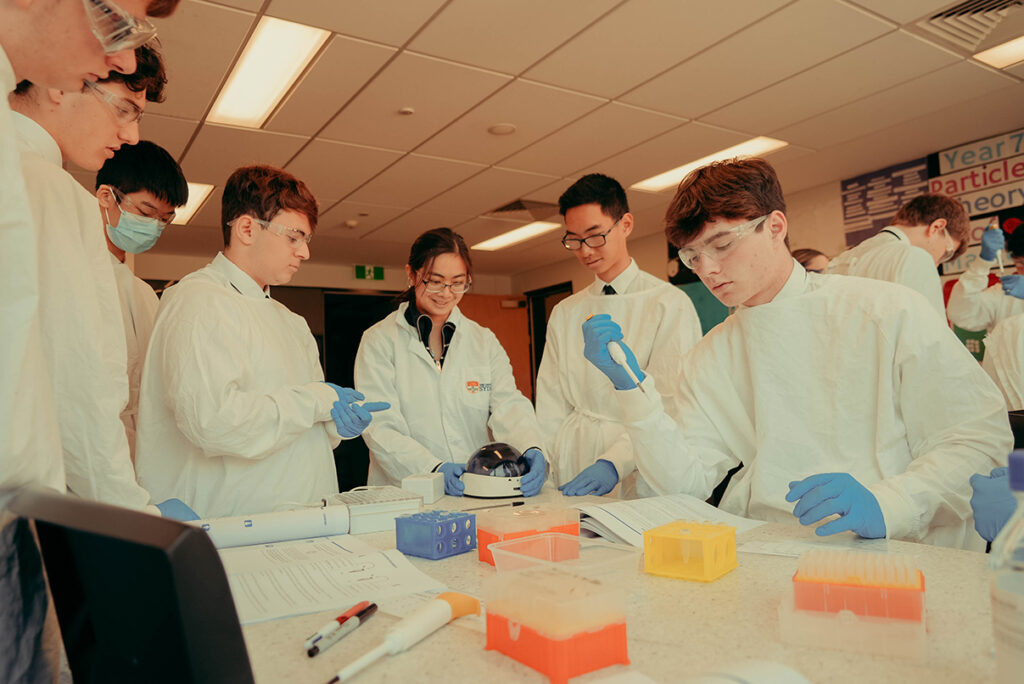Scientific inquiry? It’s in our DNA
Year 12 Biology students (or should we say scientists?) were given the fantastic opportunity to attend a biotechnology experience in the Newington labs in Term 3.
This privilege was offered to us by Sydney University and Amgen, a large biotechnology company headquartered in California. The company has made significant contributions to the healthcare industry by pioneering the use of recombinant DNA.
Using scientific equipment and technology generously loaned to Newington, and with assistance from the Sydney University staff, we spent the day learning how to create recombinant DNA to insert it into bacteria, resulting in a genetically modified organism.
Recombinant DNA is a DNA molecule that is created by combining genetic material from different sources and can be used to mass produce desired genes, such as the gene for insulin in humans.
Our multi-stage lab procedure began with practising our micro-pipetting skills, which we put to good use in creating our recombinant DNA plasmid. After combining our DNA fragment with our plasmid, we used gel electrophoresis to analyse our DNA fragments according to size. Identifying the length of base pairs of the different plasmids enabled us to verify the restriction and ligation procedures that we used to transfer DNA fragments and create our recombinant DNA plasmid.
After transforming our genetically modified plasmid into E. coli bacterium, we had officially achieved our goal of creating our recombinant DNA. Then, after cultivating the bacteria upon agar plates, we made predictions of potential bacterial growth in relation to the presence of ampicillin (an antibiotic) and arabinose (a sugar found in plant polymers).
We are yet to review our results; however, the word is that we were (semi) successful. The Sydney University staff were kind enough to provide pre-prepared samples showing the expression of a red fluorescent protein genetic marker to signify the arabinose and ampicillin antibiotic resistant bacteria. Anticipation in the hope of our own results thus ensued.
In supporting the biotechnology module of the HSC Biology syllabus, the incursion not only affirmed our knowledge of recombinant DNA technology and gel electrophoresis, but strengthened our scientific methodology, aseptic technique and risk management through interactive experiences with cutting-edge scientific equipment.
For this insight into lab work in university courses, we thank Sydney University and Amgen. Our eyes have been opened to the world of genetic technologies, and our interest stirred in potentially being part of the biotechnological fields of the future.
Leo Bell and Marcus Pearson
Year 12






This article first appeared in the Spring 2023 edition of The NC.



